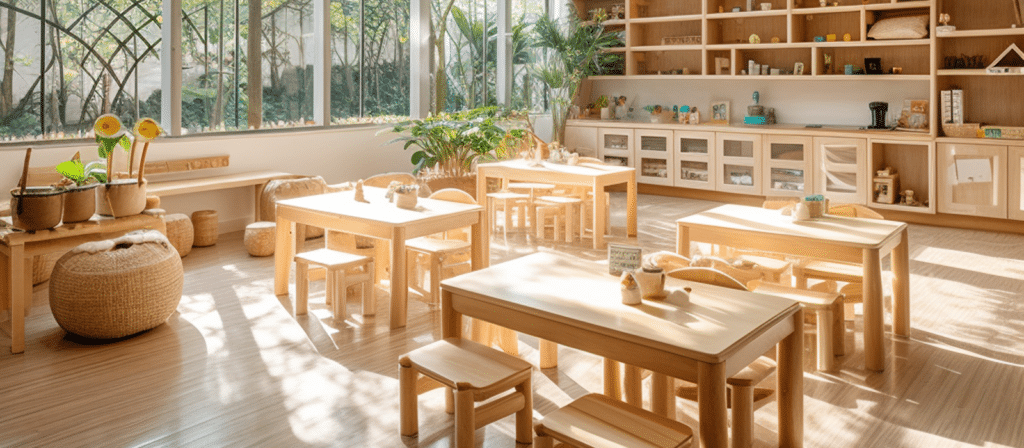Are you looking to create an optimal Montessori learning environment by arranging furniture effectively in your classroom? Join us as we unveil a set of practical tips to help you make the most of Montessori furniture, fostering a conducive and engaging atmosphere for children’s growth and development.
Practical Tips for Arranging Montessori Furniture in a Classroom involve strategic considerations that optimize learning spaces. These tips empower educators to create environments that encourage independence, exploration, and a love for learning among students.
Why is the arrangement of Montessori furniture important?
Arranging Montessori furniture in a thoughtful and intentional manner is crucial for several reasons. First and foremost, it allows for easy access to materials and promotes independence among the children. When the furniture is arranged in such a way that everything is within reach, the children can freely explore and select materials without relying on constant assistance from the teacher.
Secondly, a well-arranged classroom enhances the flow of movement. Montessori classrooms are designed to encourage children to move freely and engage in purposeful activities. By arranging the furniture in a manner that allows for clear pathways and open spaces, we enable the children to navigate the classroom with ease and grace.
Lastly, an organized and visually appealing environment has a positive impact on the children’s concentration and overall learning experience. When the furniture is arranged in a tidy and aesthetically pleasing manner, it helps create a calm and inviting atmosphere that promotes focus and engagement.
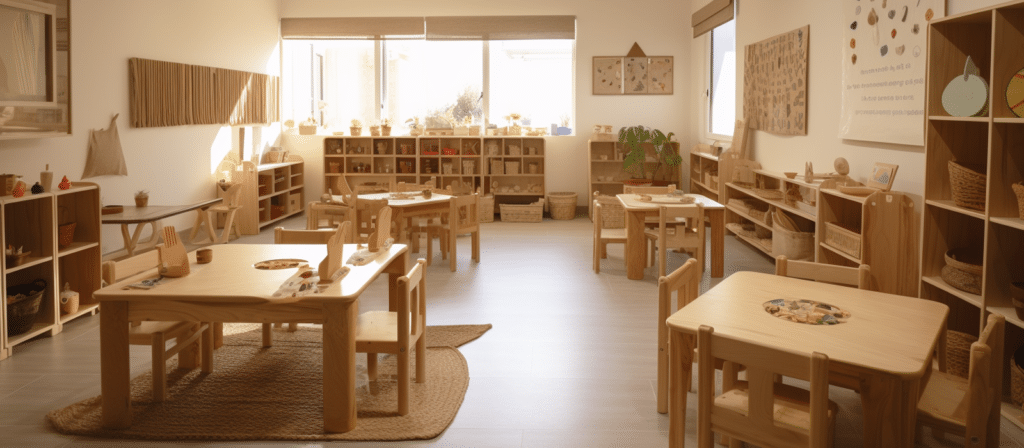
Practical Tips for Arranging Montessori Furniture
1. Consider the functionality of each area
When arranging Montessori furniture, it is important to consider the functionality of each area within the classroom. Divide the space into different areas such as practical life, sensorial, language, math, and cultural. Each area should have the appropriate furniture and materials that cater to the specific activities and learning experiences associated with that area.
For example, the practical life area should have low shelves or cabinets where materials like pouring, transferring, and sorting activities can be displayed. The math area should have tables or workstations where children can engage in hands-on math activities with manipulatives. By carefully considering the functionality of each area, you can ensure that the furniture supports the intended learning objectives.
2. Create clear pathways
To facilitate the flow of movement and promote independence, it is important to create clear pathways within the classroom. Avoid cluttering the space with unnecessary furniture or materials that may obstruct the children’s movement. Instead, focus on creating open spaces that allow the children to move freely between different areas and engage in activities without obstacles.
Arrange the furniture in a way that leaves ample space between each item, ensuring that there is enough room for the children to comfortably navigate the classroom. This not only promotes independence but also helps prevent accidents and encourages a sense of order and organization.
3. Use child-sized furniture
A fundamental principle of Montessori education is to provide furniture that is proportionate to the size of the children. Using child-sized furniture allows the children to comfortably sit, stand, and interact with the materials. It also promotes a sense of ownership and autonomy, as the furniture is designed specifically for their needs.
Invest in child-sized tables, chairs, and shelves that are sturdy and durable. Avoid using adult-sized furniture, as it can be uncomfortable and challenging for the children to navigate. Opt for materials that are child-friendly, easy to clean, and safe for use in a classroom setting.
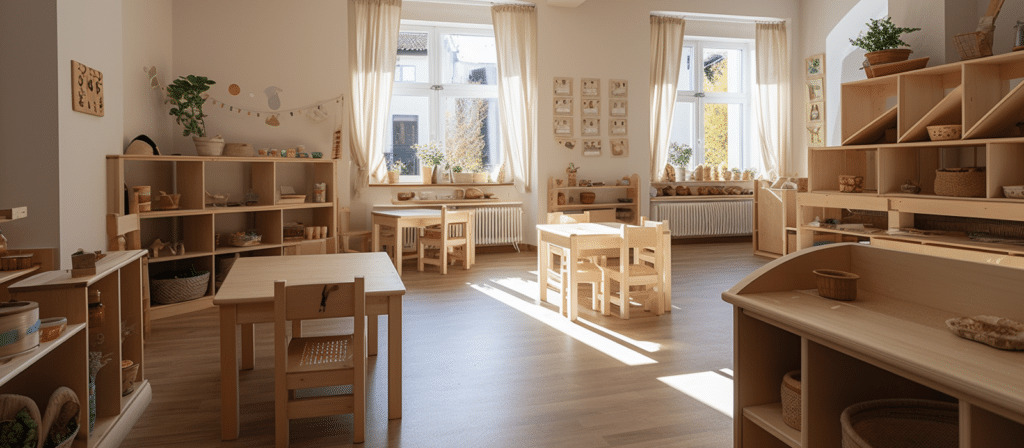
4. Consider the flow of activities
When arranging Montessori furniture, it is important to consider the flow of activities within the classroom. Place materials and furniture in a logical sequence that follows the natural progression of the children’s learning journey.
For example, arrange the language area in a way that allows for a smooth transition from pre-reading activities to reading and writing activities. Ensure that the materials and furniture are organized in a way that supports the children’s natural development and progression through different levels of complexity.
5. Create inviting and aesthetically pleasing spaces
Montessori classrooms are known for their inviting and aesthetically pleasing environments. Take the time to create visually appealing spaces within the classroom by using colors, textures, and natural materials that inspire curiosity and creativity.
Consider incorporating plants, artwork, and soft furnishings to add warmth and comfort to the space. Use open shelving to display materials in an organized and visually appealing manner. By creating a visually stimulating environment, you can enhance the children’s engagement and create a space that they feel proud to be a part of.
6. Arrange materials in an orderly manner
In a Montessori classroom, materials are carefully selected and arranged to promote independent learning. When arranging materials, consider organizing them in a logical and systematic way. Use open shelves and labeled containers to make materials easily accessible and visible to children. Arrange materials in a sequential order, starting from left to right and top to bottom, to foster a sense of order and facilitate independent exploration.
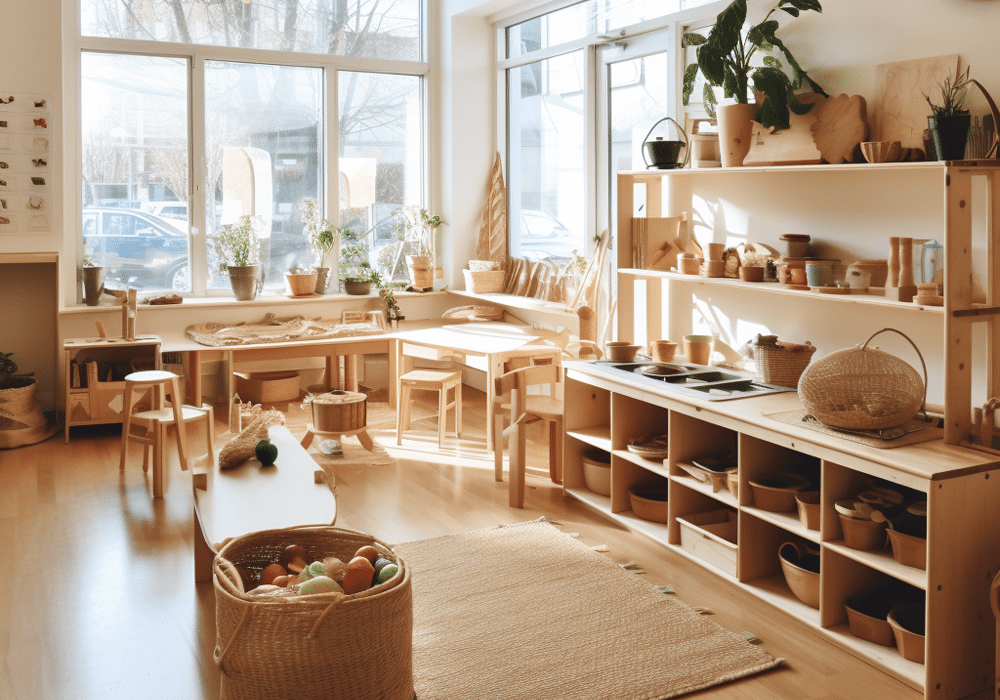
7. Foster a sense of community
In addition to individual workspaces, it is essential to create areas that foster collaboration and community in the classroom. Arrange furniture in a way that encourages group work and social interaction. Consider creating a circle time area for group discussions or a communal table for collaborative projects. These spaces promote communication, teamwork, and the development of social skills.
8. Personalize the classroom
Adding personal touches to the classroom can create a warm and welcoming environment. Encourage children to contribute to the arrangement of the classroom by involving them in decision-making processes. Allow them to choose how to decorate certain areas or display their work. Personalization gives children a sense of ownership and pride in their learning environment.
9. Regularly evaluate and adapt the arrangement
The arrangement of furniture in a Montessori classroom is not set in stone. It is essential to regularly evaluate the effectiveness of the arrangement and make necessary adjustments based on the needs and interests of the children. Observe how children interact with the space and materials and make changes accordingly. Flexibility in the arrangement allows for continuous improvement and ensures that the classroom remains dynamic and responsive to the evolving needs of the children.
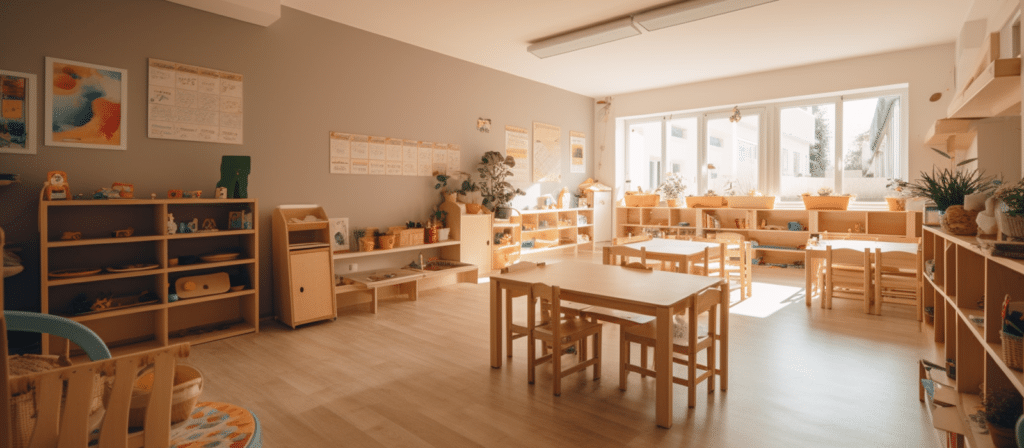
Conclusion
Arranging Montessori furniture in a classroom is a deliberate and thoughtful process. It involves considering the flow of movement, creating designated areas for different activities, using child-sized furniture, arranging materials in an orderly manner, fostering a sense of community, personalizing the space, and regularly evaluating and adapting the arrangement. By following these practical tips, educators can create an environment that supports independent learning, exploration, and growth in a Montessori classroom.
That’s it! I hope these tips have provided you with valuable insights on arranging Montessori furniture in a classroom. If you have any additional tips or experiences to share, feel free to leave a comment below. Happy arranging!

